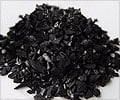In a new research, scientists have determined that even tundra plant growth in the Arctic would be unable to offset the permafrost carbon release in the region.
In a new research, scientists have determined that even tundra plant growth in the Arctic would be unable to offset the permafrost carbon release in the region.
The report of the research team, led by a University of Florida (UF) ecologist, indicates that experimental results suggests tundra plant growth may keep up with rising carbon dioxide (CO2) initially.But, if thawing continues in a warmer world, the permafrost will spew carbon for decades, and the plants will become overwhelmed - unable to sop up the excess carbon despite even the most vigorous growth.
Ted Schuur, a UF associate professor of ecology and lead author of the research paper, noted most of the 13 million square kilometers, or roughly 5 million square miles, of permafrost in Alaska, Canada, Siberia and parts of Europe remain frozen.
However, thawing already occurring around its southern edges is expected to expand this century.
Should that occur, this study suggests the permafrost could lose in the range of 1 gigaton of carbon, or 1 billion tons, per year, according to Schuur.
Researchers from UF used hand-built, automated chambers to trap and measure carbon dioxide losses in Alaska year-round from 2004 through 2006.
Advertisement
The researchers determined how long each spot had been thawing using long-term data from permafrost-monitoring instruments combined with historical aerial photographs.
Advertisement
This resulted in a measurement of net ecosystem carbon exchange - the total carbon each spot lost, or gained, due to thawing permafrost.
Results indicated that tundra sites that had thawed for the past 15 years gained net carbon, as increasingly verdant plant growth was greater than the permafrost's carbon losses.
However, radiocarbon dating of CO2 showed that old carbon from the permafrost was already being released in higher amounts due to thaw, signifying that all was not well with the permafrost carbon even in that time period.
The site that began thawing decades before gained net carbon emission to the atmosphere, revealing that more thaw caused significantly more old carbon loss, despite greening of the vegetation, including more shrubs.
According to the researchers, even as the Arctic greens, its escalating old carbon loss "could make permafrost a large biospheric carbon source in a warmer world."
Source-ANI
SAV









